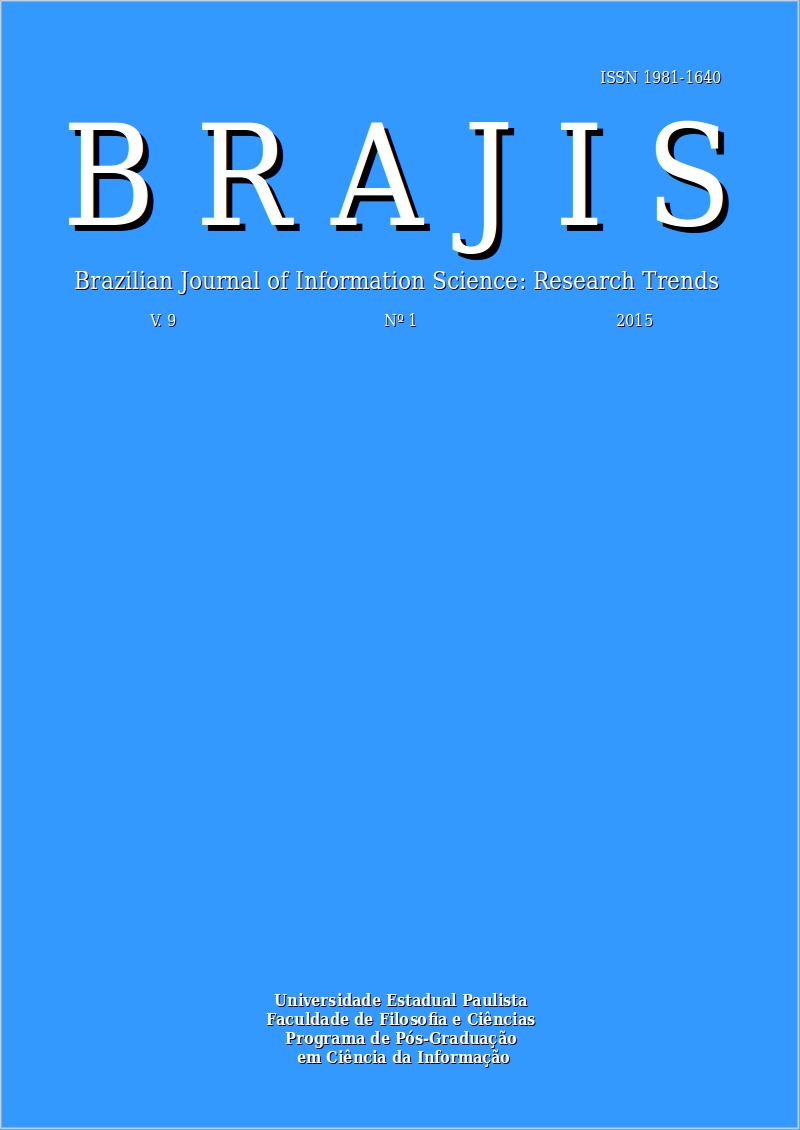Evolution and structure of "Sustainable development"
a bibliometric study
DOI:
https://doi.org/10.36311/1981-1640.2015.v9n1.03.p22Palavras-chave:
Sustainable development, bibliometric study, scientific production, Web of Science category.Resumo
Sustainable development is an interdisciplinary subject that has developed dramatically over the last few decades. Bibliometrics offers quantitative analytical techniques with which to study the development and growth of research in this area. The information used for the present study was retrieved from the SCI-EXPANDED, SSCI, and A&HCI (Thomson Reuters) databases. The search was made on the topic "Sustainable development", limited to Document Types (Article) and Time Span (1900-2013). The result was a total of 13 093 articles retrieved. During the last 10 years, the annual (exponential) growth rate has been 12%, corresponding to a 6-year doubling time. The productivity of the authors varied widely. The 23 290 occurrences of the articles were distributed among 218 Web of Science categories. "Environmental Sciences" was the top-ranked category, with 3427 occurrences (by itself accounting for more than 26% of the total, and presenting the greatest diversity), followed by "Environmental Studies" (2417), "Ecology" (1046), and "Economics" (933). The methodological approach taken in the present work could be used to describe the structure of any other scientific field and its relationships with other disciplines, and to visualize the relationship between the different WoS categories conforming the subject under study.
Downloads
Referências
Downloads
Publicado
Edição
Seção
Licença
Copyright (c) 2015 Antonio Pulgarín , Pieta Eklund , Ramón Garrote , Maria Isabel Escalona-Fernández

Este trabalho está licenciado sob uma licença Creative Commons Attribution-ShareAlike 4.0 International License.
Ao submeter um artigo os autores mantêm os direitos autorais do mesmo, cedendo ao Brazilian Journal of Information Science plenos direitos para publicação do referido texto.
O (s) autor (es) concorda(m) que o artigo, se aceito editorialmente para publicação, deve ser licenciado sob a licença Creative Commons Attribution-ShareAlike 4.0 International (CC BY-SA 4.0) (http://creativecommons.org/licenses/by-sa /4.0) Os leitores / usuários são livres para: - Compartilhar - copiar e redistribuir o material em qualquer meio ou formato - Adaptar - remixar, transformar e desenvolver o material para qualquer finalidade, mesmo comercialmente. O licenciante não pode revogar essas liberdades desde que você siga os termos da licença. Sob os seguintes termos: - Atribuição - Você deve dar o crédito apropriado, fornecer um link para a licença e indicar se foram feitas alterações. Você pode fazê-lo de qualquer maneira razoável, mas não de maneira que sugira que o licenciante endossa você ou seu uso. - ShareAlike - Se você remixar, transformar ou desenvolver o material, deverá distribuir suas contribuições sob a mesma licença que o original. Sem restrições adicionais - Você não pode aplicar termos legais ou medidas tecnológicas que restrinjam legalmente outras pessoas a fazer o que a licença permitir. Avisos: - Você não precisa cumprir a licença para elementos do material em domínio público ou nos casos em que seu uso é permitido por uma exceção ou limitação aplicável. - Não há garantias. A licença pode não fornecer todas as permissões necessárias para o uso pretendido. Por exemplo, outros direitos, como publicidade, privacidade ou direitos morais, podem limitar a maneira como você usa o material.
 Creative Commons Attribution-ShareAlike 4.0 International License
Creative Commons Attribution-ShareAlike 4.0 International License







